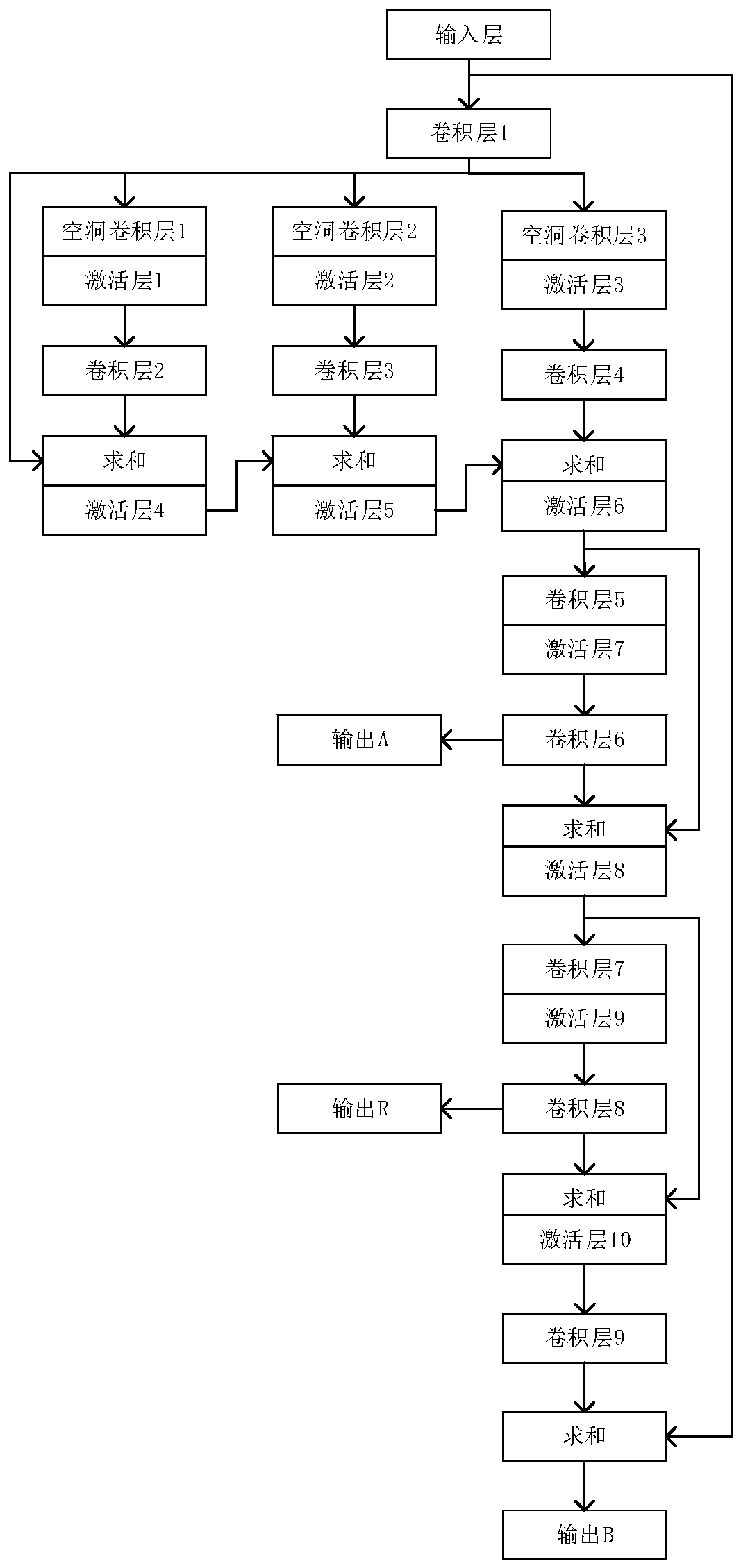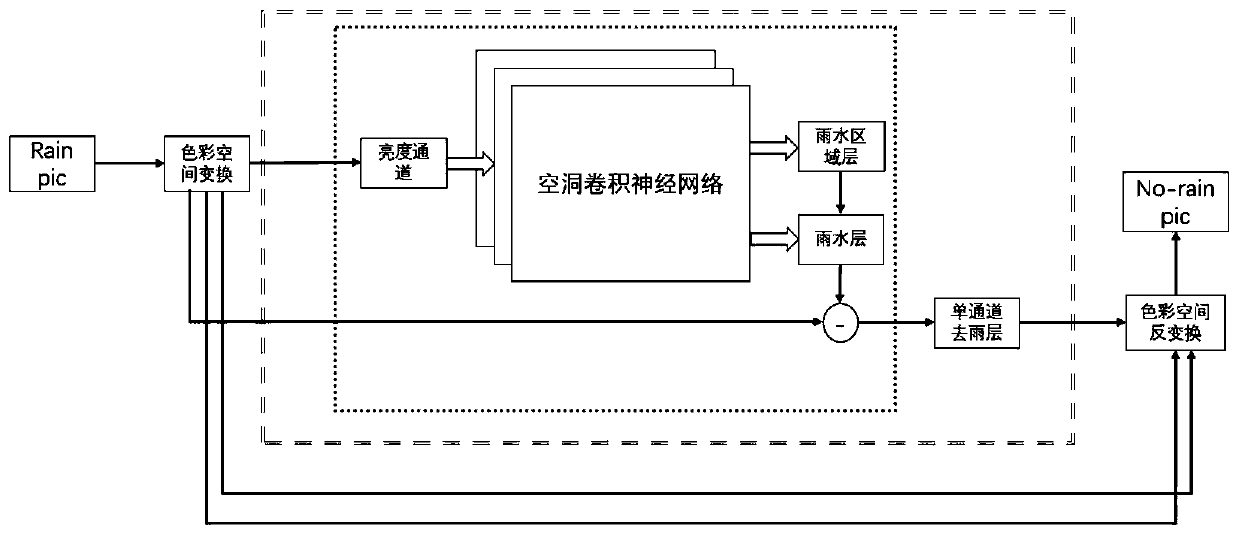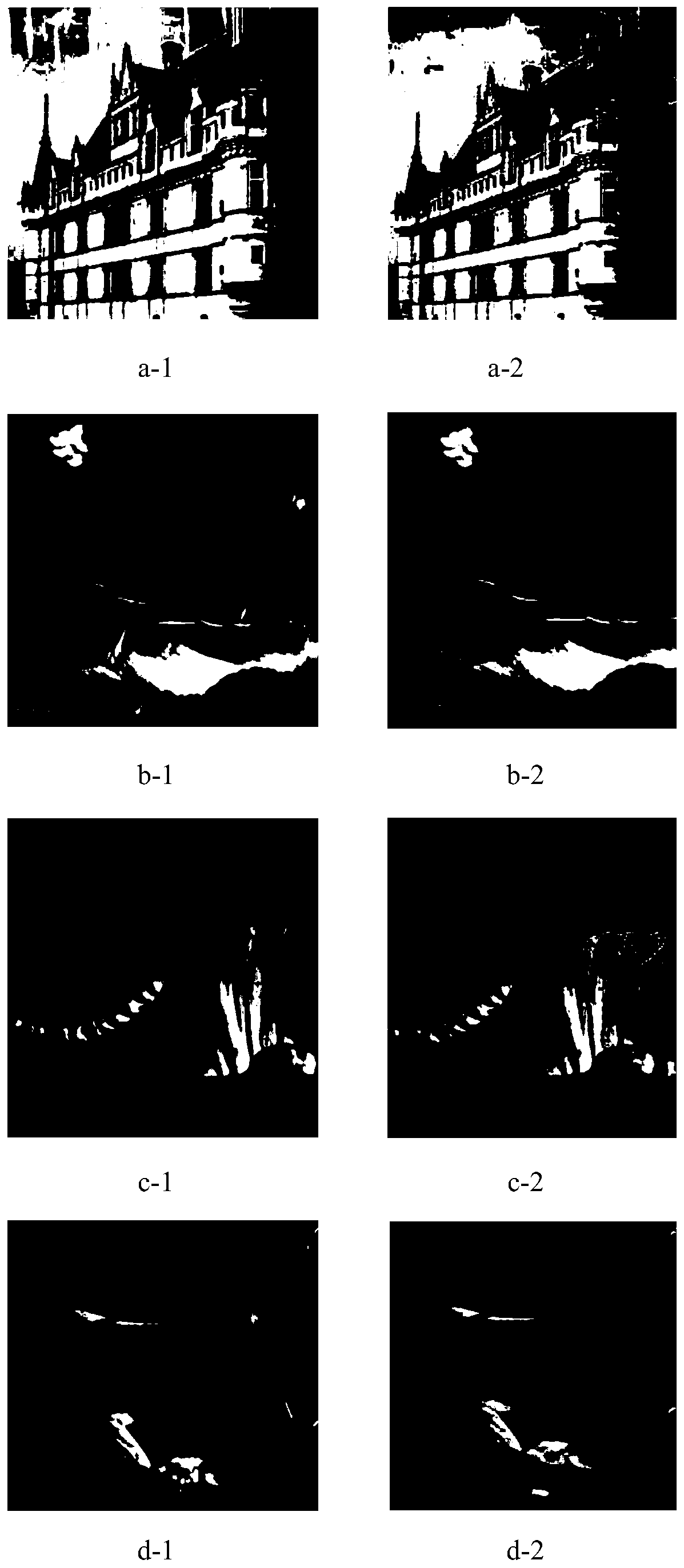Single-image-oriented rain removal method based on cascaded hole convolutional neural network
A technology of convolutional neural network and single image, which is applied in the direction of biological neural network model, neural architecture, image enhancement, etc., to achieve the effect of generalization and integrity assurance
- Summary
- Abstract
- Description
- Claims
- Application Information
AI Technical Summary
Problems solved by technology
Method used
Image
Examples
Embodiment
[0035] This embodiment provides a method for removing rain from a single image based on a cascaded hole convolutional neural network, including the following steps:
[0036] Step 1: Construct a deraining model based on cascaded dilated convolutional neural network:
[0037] Step 1-1: Modeling the rainwater part of the rainwater image according to the model features of the rainwater image;
[0038] The image rain model widely used in academia and industry is: O=B+R. In this rain model, O is an image containing rain, B is a background layer, and R is a rain layer; but there are some shortcomings in this rain model, which will When the rain-free image is synthesized with the rain image, the overlay method of the background layer plus the rain layer is directly used. When using this model to separate the background of the rain image synthesized by the rain model, it is necessary to use the rain removal method of the model to extract the rain image. The features are identified at ...
PUM
 Login to View More
Login to View More Abstract
Description
Claims
Application Information
 Login to View More
Login to View More - R&D
- Intellectual Property
- Life Sciences
- Materials
- Tech Scout
- Unparalleled Data Quality
- Higher Quality Content
- 60% Fewer Hallucinations
Browse by: Latest US Patents, China's latest patents, Technical Efficacy Thesaurus, Application Domain, Technology Topic, Popular Technical Reports.
© 2025 PatSnap. All rights reserved.Legal|Privacy policy|Modern Slavery Act Transparency Statement|Sitemap|About US| Contact US: help@patsnap.com



